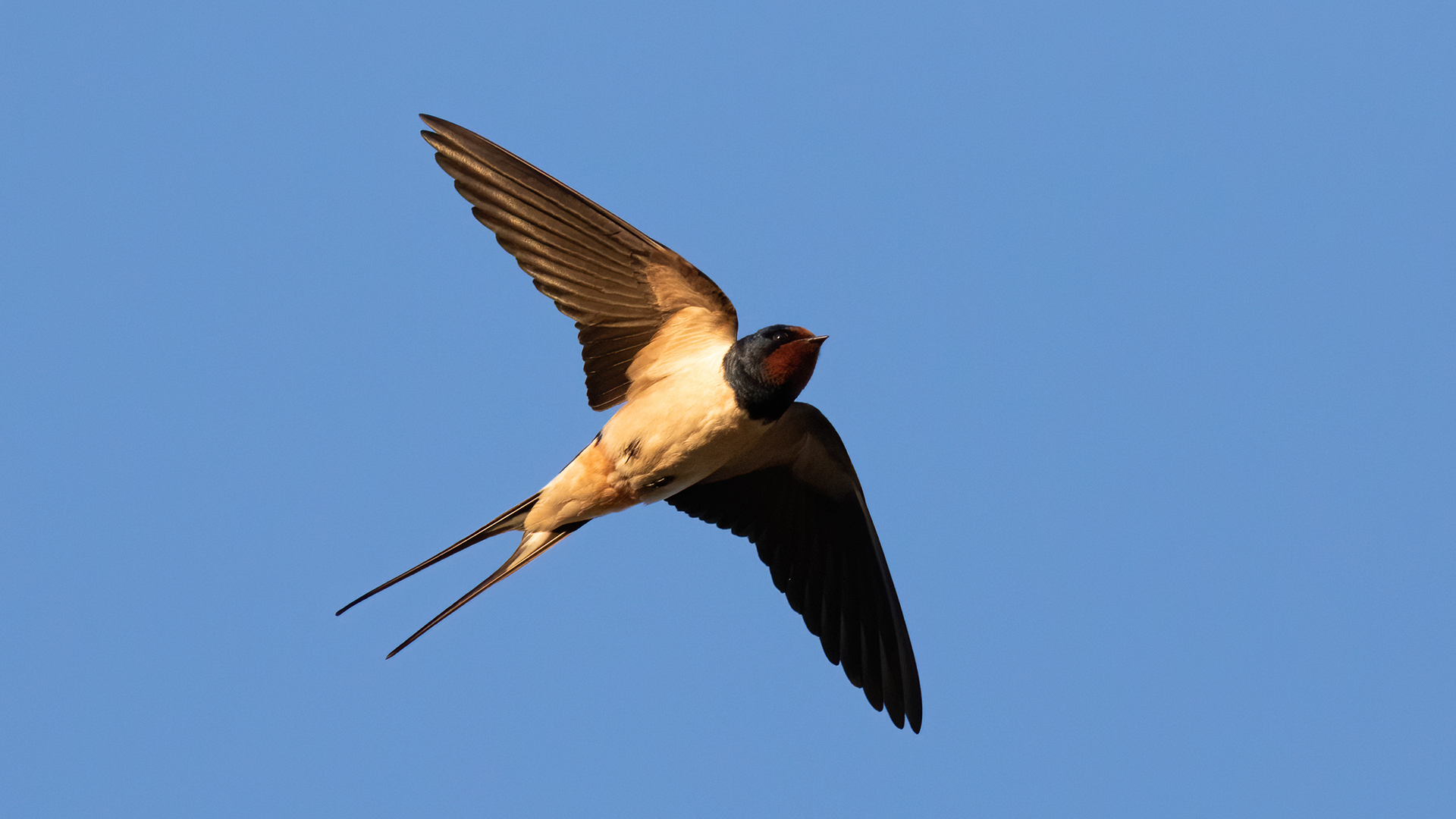When we the first swallows arrive in Portugal, one thing is certain: spring is almost here. This summer bird is a symbol of hope, family and home and a true national symbol, a tale of the love of Portugal for this bird, which is there in so many homes across the country. Know the barn swallow (Hirundo rustica) species and its itinerary in its search for heat and food.
Of the five terrestrial species of swallows that can be watched in the Portuguese skies, the barn swallow (Hirundo rustica) is the first to appear after winter, a sign that the good spring weather is finally here. This species stays with us for nine months nearly everywhere in this territory, usually between February and October. But climate changes may be altering the duration of its visit.
The barn swallow prefers humanized areas to settle in and also water courses, flooded areas and meadows. If you do not see them in mid-flight that’s because they are, most certainly, on a high structure, on poles or electrical wires.
A distinctive feature of this summer species is its black tail, forked and long, perfectly proportionate and one of the longest among the Portuguese avifauna, with tail streamers – rectrices, which are clearly visible when they are fly and slightly shorter in females. Dark blue is the predominant colour of its body: on the head, chest band, back and upper part of the wings, and often glossy blue that appears to be black from a distance. On its forehead and throat, two reddened colour shades. Eyes, beaks and paws, the latter short, are black, but hidden by white fluff, distributed evenly in the lower part of the body.
It is a widely spread species. After wintering in South America, Sub-Saharan Africa, South Asia, South-West Asia, and Northern Australia, the barn swallow makes its summer ascent to Europe, North America, North Africa, and Asia. Upon its return, it may use the same nest or, if it can’t find it, uses the same location to build a new one, made of mud.
Swallows fly in small flocks in their search for food, displaying their elegant and fast movements, scraping the ground with mastery (we see them flying low, almost touching trails or roads), and displaying their flying skills while looking for food. They hunt mostly invertebrates and insects and play therefore an important role in balancing biodiversity, thus preventing the spread of pests and diseases.
This is a monogamous species. Females and males spend their lives together, and that is why these birds are also a symbol of love. The symmetrical guides are extremely important for the male as they are perceived by the female as a sign of healthy specimen and, therefore, a good breeder. The female produces two to three clutches per year. The eggs, usually 4 to 5, are white with red spots. Among its predators are, gulls, bats, mustelids, or even cats and fire ants. Before having the same colours of their parents, juveniles have a light brownish colour and still without the distinctive caudal guides.
Barn Swallow: a loved yet repelled species
In Portugal, its conservation status is “Least Concern” (LC), although the latest data provided by the last Common Bird Census (CAC), which gathered information between 2004 and 2023, state that its population has decreased by 36% in Portugal since then.
This census is an important providing data on the state of biodiversity from which national governments and European entities can act to ensure the conservation of species. Farming increase is also pointed out as one of the main causes of the decline of European birds.
Other dangers faced by the barn swallow include climate changes that force this species to change its route and less access to locations to make its nests. On the one hand, the disappearance of vacant buildings, with their cavities and sheltered hiding places, strongly contributes to this lower availability of safe places to nest and, on the other hand, there is also the added problem of nests being destroyed illegally.
The dirt under the nests is one of the main complaints leading some individuals and public entities to consider the removal of nests. Unauthorized disposal of nests is prohibited under Portuguese law. To obtain authorization, a request must be sent to the Institute for the Conservation of Nature and Forests (ICNF), which will indicate the best time to do so, outside the nesting season.
Another solution to maintain good relations with this species and avoid public health risks may be the placement of shelves for excrements, to preserve the architecture of buildings and the natural heritage, or even placing artificial nests.



